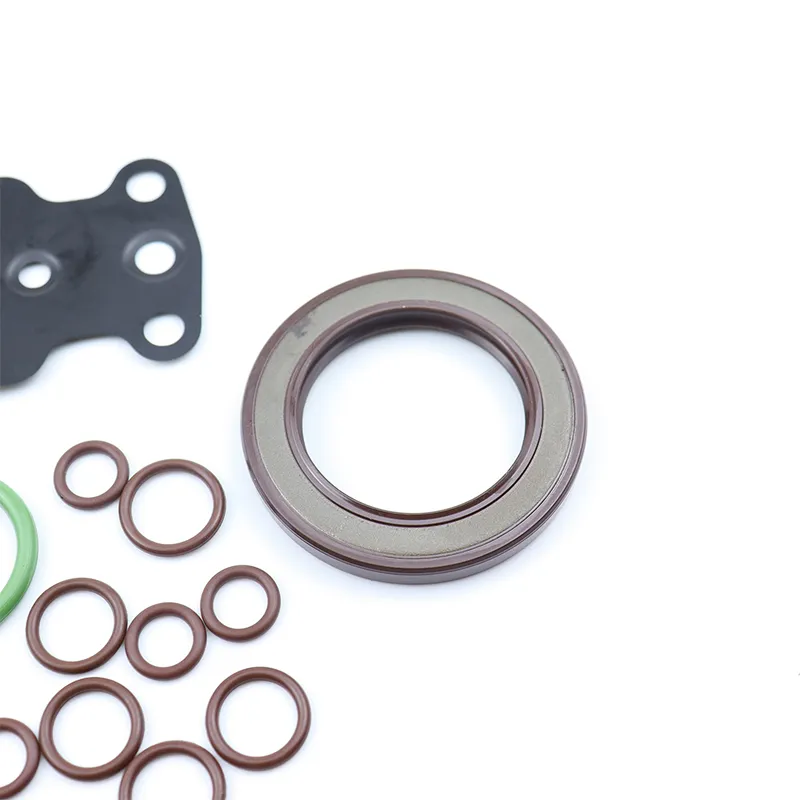10 月 . 21, 2024 15:47 Back to list
Hydraulic Cylinder Seal Kit Solutions for Enhanced Performance and Longevity
Understanding Hydraulic Cylinder Seal Kits A Comprehensive Guide
Hydraulic systems are integral to various industrial applications, from construction machinery to manufacturing equipment. One critical component within these systems is the hydraulic cylinder, which converts fluid power into linear motion. However, to ensure optimal performance and longevity of hydraulic cylinders, proper sealing is pivotal. This is where hydraulic cylinder seal kits come into play. In this article, we will explore the importance of seal kits, their components, selection criteria, and maintenance practices.
What Are Hydraulic Cylinder Seal Kits?
Hydraulic cylinder seal kits consist of various sealing components designed to prevent leaks and contamination in hydraulic systems. They typically include o-rings, seals, and backup rings, all tailored to fit specific cylinder designs. These kits are crucial for maintaining hydraulic pressure, ensuring efficient system operation, and prolonging the lifespan of hydraulic components.
Importance of Seal Kits
The primary function of hydraulic seals is to contain hydraulic fluid and maintain pressure within the cylinder. Without effective seals, fluid leaks can occur, leading to decreased efficiency and potential damage to the cylinder. Moreover, contaminated fluid can lead to increased wear and tear of hydraulic components, resulting in costly repairs and downtime.
Seal kits not only help in preventing leaks but also play a crucial role in reducing friction between moving parts. This friction reduction is essential for improving the overall efficiency of the hydraulic system, thereby enhancing the performance of machinery and equipment.
Components of Hydraulic Seal Kits
1. O-Rings These are circular seals that provide a tight seal between two components, preventing leaks. O-rings are often made from materials like nitrile, polyurethane, or silicone, which offer excellent resistance to various hydraulic fluids.
2. Rod Seals These seals are located at the end of the hydraulic cylinder's rod and prevent fluid from escaping as the rod extends and retracts. They are designed to handle high pressure and, in some cases, have a lip that provides additional support against dirt and contamination.
3. Piston Seals Found within the cylinder, these seals ensure that hydraulic fluid does not bypass the piston, maintaining effective pressure. Piston seals come in various styles, including single-acting and double-acting seals, depending on the application's requirements.
4. Backup Rings These components are used alongside o-rings to prevent extrusion under high pressure, thereby enhancing the seal's effectiveness and durability.
5. Wipers These seals are positioned at the outer cylinder to remove dirt and debris from the rod before it enters the cylinder, preventing contamination of the hydraulic fluid.
hydraulic cylinder seal kits

Selecting the Right Seal Kit
Choosing the appropriate hydraulic cylinder seal kit is essential for optimal performance
. Here are some factors to consider when selecting a seal kit1. Application Requirements Understand the specific demands of your hydraulic system. Consider factors such as pressure, temperature, and the type of fluid used.
2. Material Compatibility Ensure that the seal materials are compatible with the hydraulic fluid and environmental conditions. Different materials offer varying levels of resistance to temperature, pressure, and chemical exposure.
3. Size and Design Accurate measurements of the cylinder and rod dimensions are crucial for selecting the right seal kit. Custom designs may also be necessary for specialized applications.
Maintenance of Hydraulic Seal Kits
To maximize the life of hydraulic seal kits, regular inspection and maintenance are essential. Here are some best practices
1. Routine Inspections Regularly check for signs of wear, such as leaks or surface damage around the seals.
2. Fluid Quality Ensure the hydraulic fluid is clean and free from contaminants, as this significantly impacts seal performance.
3. Temperature Management Monitor the operating temperature to prevent overheating, which can degrade seal materials.
4. Timely Replacements Replace seals at the first sign of damage or wear to prevent further issues within the hydraulic system.
Conclusion
Hydraulic cylinder seal kits are vital for ensuring the efficiency and longevity of hydraulic systems. By understanding their components, selecting the appropriate kits, and adhering to maintenance best practices, operators can enhance the performance of their machinery and reduce downtime. Whether in industrial settings, construction, or manufacturing, investing in high-quality seal kits is crucial for optimal hydraulic operation.
-
The Power of Advanced Sealing: High-Pressure Solutions for Modern Machinery
NewsOct.29,2024
-
Optimizing Machinery with High-Performance Oil Seals
NewsOct.29,2024
-
Maximizing Machinery Efficiency with Advanced Oil Seals
NewsOct.29,2024
-
Ensuring Equipment Longevity with Quality Oil Seals
NewsOct.29,2024
-
Enhance Equipment Performance with Quality Oil Seals
NewsOct.29,2024
-
Custom Oil Seals for Specialized Machinery Needs
NewsOct.29,2024
-
The Role of Wiper Seals in Dust Sealing and Oil Protection
NewsOct.20,2024
Products categories
















